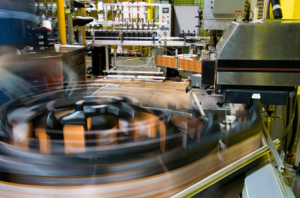
Holiday packaging problems
An online retailer of a wide variety of creatively‐designed merchandise had been using the I.B. bubble on‐demand system from Sealed Air. During the company’s annual holiday peak business period, the 16 I.B. units could not keep up with the required packing output. As a result, the company had to create an “overflow” packing area with 7 additional I.B. units. Additionally, they had to keep back‐up units on site and also required one to two visits per week from a service tech.
Void fill solved
The eCommerce company knew they needed an air pillow system which would enable them to improve their packing efficiency. Delivering products on time to consumers during the holiday period—which is responsible for approximately 90% of their annual sales—was critical to the success of their business.
 Packaging automation is helping companies to increase production while decreasing expenses.
Packaging automation is helping companies to increase production while decreasing expenses.Working with a Pregis distributor partner and buoyed by the successful Surface Guard relationship, the company agreed to a beta test of the new system. Initially, one Axis machine was placed in the overflow area to see how the system performed and gather employee feedback.
The company immediately experienced two benefits:
- Increased production output resulting from faster overhead replenishment
- Less material consumed to protect the contents. (The pattern features a 1‐1/2 inch pillow height compared to the ¾‐inch offered by SA’s bubble‐on‐demand. That means that less material is required to provide the same protection.)
Further, the HLX Trio pattern can be used as a top or bottom pad for void fill, wrapping or cushioning. This flexibility is ideal because the company uses a variety of corrugated case sizes to ship their products which typically weighs between 2‐ and 15‐pounds.
The employees loved how easy it was to access the material from the overhead delivery bins that Pregis designed and the simplicity of the machine and roll loading. Taking material usage, labor reduction, and no down time into account, the company projects a 20% reduction in cost. One Axis unit quickly turned into six installations and the customer is planning to convert the balance of the cushioning / void fill applications over in the near future.
Read more:








